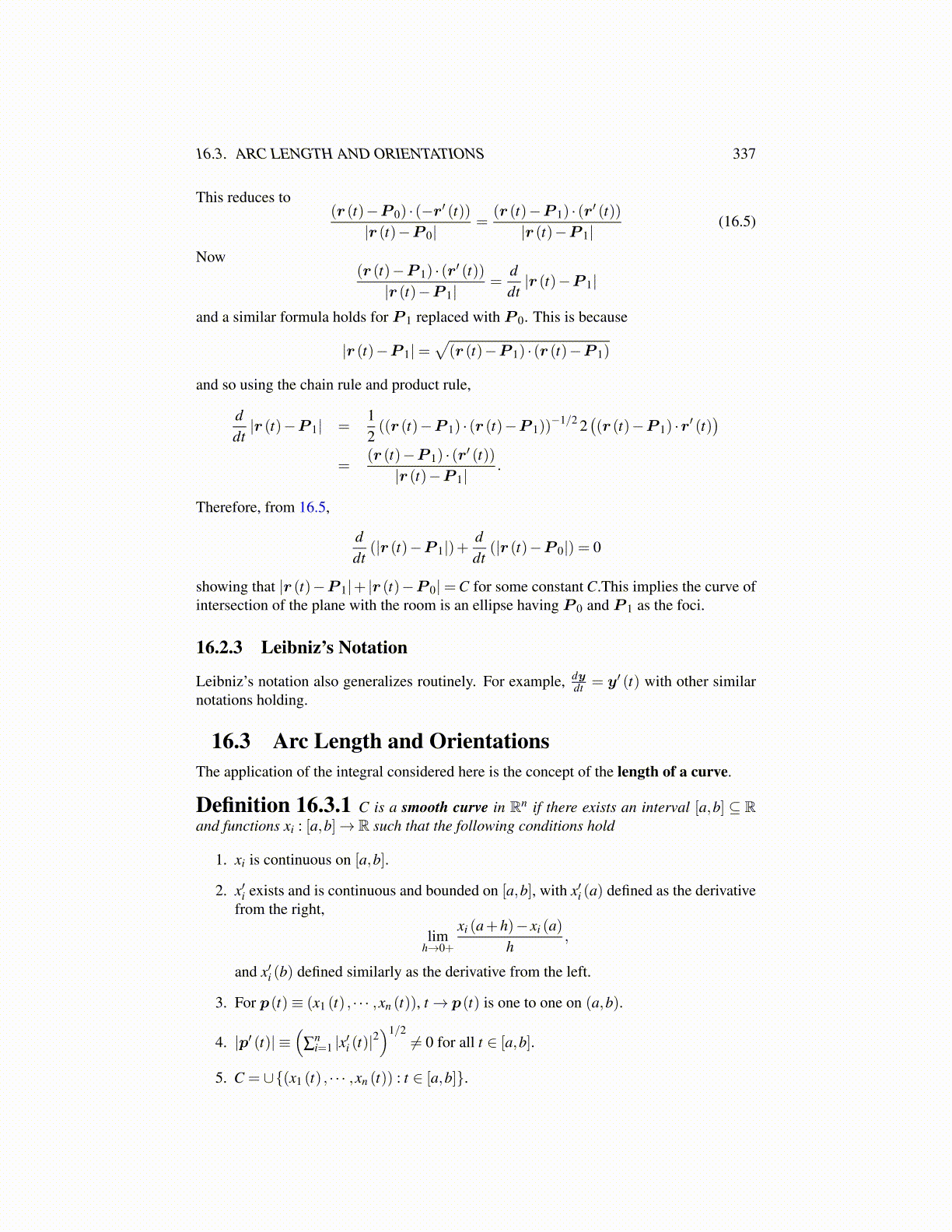
16.3. ARC LENGTH AND ORIENTATIONS 337
This reduces to(r (t)−P 0) · (−r′ (t))
|r (t)−P 0|=
(r (t)−P 1) · (r′ (t))|r (t)−P 1|
(16.5)
Now(r (t)−P 1) · (r′ (t))
|r (t)−P 1|=
ddt
|r (t)−P 1|
and a similar formula holds for P 1 replaced with P 0. This is because
|r (t)−P 1|=√
(r (t)−P 1) · (r (t)−P 1)
and so using the chain rule and product rule,
ddt
|r (t)−P 1| =12((r (t)−P 1) · (r (t)−P 1))
−1/2 2((r (t)−P 1) ·r′ (t)
)=
(r (t)−P 1) · (r′ (t))|r (t)−P 1|
.
Therefore, from 16.5,
ddt
(|r (t)−P 1|)+ddt
(|r (t)−P 0|) = 0
showing that |r (t)−P 1|+ |r (t)−P 0|=C for some constant C.This implies the curve ofintersection of the plane with the room is an ellipse having P 0 and P 1 as the foci.
16.2.3 Leibniz’s Notation
Leibniz’s notation also generalizes routinely. For example, dydt = y′ (t) with other similar
notations holding.
16.3 Arc Length and OrientationsThe application of the integral considered here is the concept of the length of a curve.
Definition 16.3.1 C is a smooth curve in Rn if there exists an interval [a,b] ⊆ Rand functions xi : [a,b]→ R such that the following conditions hold
1. xi is continuous on [a,b].
2. x′i exists and is continuous and bounded on [a,b], with x′i (a) defined as the derivativefrom the right,
limh→0+
xi (a+h)− xi (a)h
,
and x′i (b) defined similarly as the derivative from the left.
3. For p(t)≡ (x1 (t) , · · · ,xn (t)), t → p(t) is one to one on (a,b).
4. |p′ (t)| ≡(
∑ni=1 |x′i (t)|
2)1/2
̸= 0 for all t ∈ [a,b].
5. C = ∪{(x1 (t) , · · · ,xn (t)) : t ∈ [a,b]}.